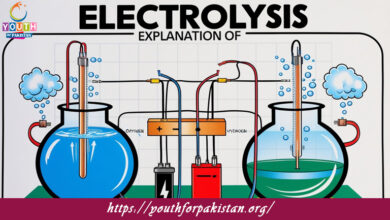Structure Of Skeletal Muscles MDCAT MCQs with Answers
Welcome to the Structure Of Skeletal Muscles MDCAT MCQs with Answers. In this post, we have shared Structure Of Skeletal Muscles Multiple Choice Questions and Answers for PMC MDCAT 2024. Each question in MDCAT Biology offers a chance to enhance your knowledge regarding Structure Of Skeletal Muscles MCQs in this MDCAT Online Test.
The functional unit of a skeletal muscle is the: a) Myofibril
b) Sarcomere
c) Muscle fiber
d) Fascicle
Which structure surrounds each muscle fiber? a) Epimysium
b) Perimysium
c) Endomysium
d) Fascicle
The connective tissue sheath surrounding a group of muscle fibers is called the: a) Endomysium
b) Perimysium
c) Epimysium
d) Sarcolemma
Muscle fibers are made up of: a) Myofibrils
b) Sarcomeres
c) Actin and myosin
d) Collagen fibers
The outermost layer of connective tissue surrounding the whole muscle is: a) Endomysium
b) Perimysium
c) Epimysium
d) Sarcoplasm
The structural and functional unit of a muscle fiber is the: a) Myofibril
b) Sarcomere
c) Muscle fiber
d) Fascicle
Muscle fibers are wrapped in a membrane called the: a) Endomysium
b) Perimysium
c) Epimysium
d) Sarcolemma
Actin and myosin are types of: a) Connective tissue
b) Muscle fibers
c) Myofilaments
d) Muscle fascicles
The term “striations” in skeletal muscle refers to: a) The orientation of muscle fibers
b) The arrangement of actin and myosin
c) The color of the muscle
d) The type of muscle contraction
The Z-line in a sarcomere marks the boundary of: a) The A band
b) The I band
c) The H zone
d) The M line
Which structure is responsible for the striated appearance of skeletal muscle? a) Myofibrils
b) Actin filaments
c) Myosin filaments
d) The regular arrangement of myofilaments
The M-line in a sarcomere is located in the: a) I band
b) A band
c) H zone
d) Z-line
Muscle fibers are grouped into bundles called: a) Myofibrils
b) Fascicles
c) Myofilaments
d) Endomysium
The thick filaments in a sarcomere are primarily composed of: a) Actin
b) Myosin
c) Tropomyosin
d) Troponin
The thin filaments in a sarcomere are primarily composed of: a) Myosin
b) Actin
c) Tropomyosin
d) Troponin
The basic repeating unit of a myofibril is called a: a) Myofilament
b) Sarcomere
c) Muscle fiber
d) Fascicle
The space between two Z-lines in a sarcomere is known as: a) The A band
b) The I band
c) The H zone
d) The M line
The H zone within the A band of a sarcomere is made up of: a) Actin filaments
b) Myosin filaments
c) Both actin and myosin filaments
d) None of the above
Which of the following structures is NOT part of a sarcomere? a) Z-line
b) M-line
c) Sarcoplasmic reticulum
d) A-band
The connection between muscle fibers and the nervous system occurs at the: a) Neuromuscular junction
b) Sarcomere
c) Tendon
d) Fascicle
The structural unit of a muscle fiber that contains myofibrils is the: a) Fascicle
b) Sarcomere
c) Myofibril
d) Myofilament
The sliding filament theory explains muscle contraction as: a) The movement of actin and myosin filaments
b) The increase in muscle length
c) The change in muscle color
d) The generation of electrical impulses
The sarcoplasmic reticulum functions primarily to: a) Provide structural support
b) Store calcium ions
c) Produce ATP
d) Connect muscle fibers
The sarcolemma is the: a) Endomysium surrounding muscle fibers
b) Membrane surrounding each muscle fiber
c) Layer of connective tissue around fascicles
d) Network of myofibrils
Muscle fibers are supplied with blood by: a) Tendons
b) Connective tissue sheaths
c) Blood vessels
d) Nerves
The T-tubules (transverse tubules) are involved in: a) Storage of calcium
b) Conduction of electrical impulses
c) Synthesis of proteins
d) Providing structural support
The primary role of myosin in muscle contraction is: a) Binding to actin
b) Providing energy
c) Storing calcium
d) Facilitating muscle growth
The thin filaments in a muscle fiber are composed mainly of: a) Actin
b) Myosin
c) Tropomyosin
d) Troponin
The thick filaments in a muscle fiber are composed mainly of: a) Actin
b) Myosin
c) Tropomyosin
d) Troponin
The I-band in a sarcomere contains: a) Only myosin filaments
b) Only actin filaments
c) Both actin and myosin filaments
d) Only tropomyosin
The A-band in a sarcomere is: a) The region of overlap between actin and myosin
b) The lighter band in a striated muscle
c) The space between two Z-lines
d) The center of a sarcomere
The primary role of the Z-line is to: a) Anchor myosin filaments
b) Anchor actin filaments
c) Regulate calcium release
d) Provide energy
The function of the T-tubules is to: a) Store calcium
b) Facilitate the transmission of electrical impulses
c) Connect actin and myosin
d) Provide energy for contraction
The sliding filament theory of muscle contraction was proposed by: a) Huxley
b) Harvey
c) Hooke
d) Lister
Skeletal muscle fibers are composed of smaller units called: a) Fascicles
b) Myofibrils
c) Sarcomeres
d) Myofilaments
The structure responsible for the release of calcium ions during muscle contraction is the: a) Sarcoplasmic reticulum
b) Endoplasmic reticulum
c) Golgi apparatus
d) Mitochondria
During muscle contraction, the distance between Z-lines: a) Increases
b) Decreases
c) Remains the same
d) Disappears
The contractile proteins in muscle fibers are: a) Actin and myosin
b) Collagen and elastin
c) Tropomyosin and troponin
d) Keratin and actin
The role of tropomyosin in muscle contraction is to: a) Block the binding sites on actin
b) Facilitate the binding of myosin to actin
c) Store calcium ions
d) Provide energy
The primary function of troponin in muscle contraction is to: a) Bind to calcium ions
b) Store energy
c) Block actin sites
d) Anchor actin filaments
The dark band in striated muscle fibers is called the: a) I-band
b) A-band
c) H-zone
d) Z-line
Muscle fibers are arranged into bundles called: a) Myofibrils
b) Fascicles
c) Sarcomeres
d) Myofilaments
The area of a sarcomere where only myosin filaments are present is the: a) I-band
b) Z-line
c) A-band
d) H-zone
The energy required for muscle contraction is provided by: a) ATP
b) Calcium ions
c) Sodium ions
d) Potassium ions
If you are interested to enhance your knowledge regarding Physics, Chemistry, Computer, and Biology please click on the link of each category, you will be redirected to dedicated website for each category.





